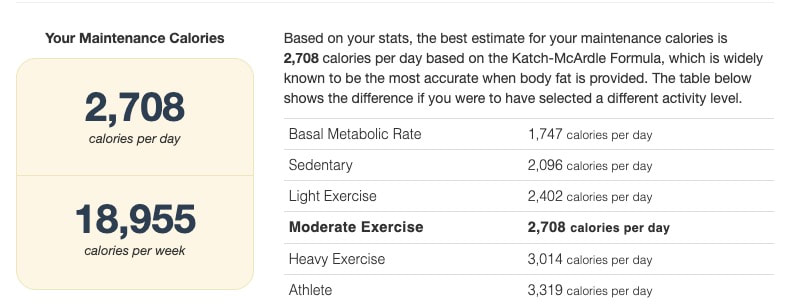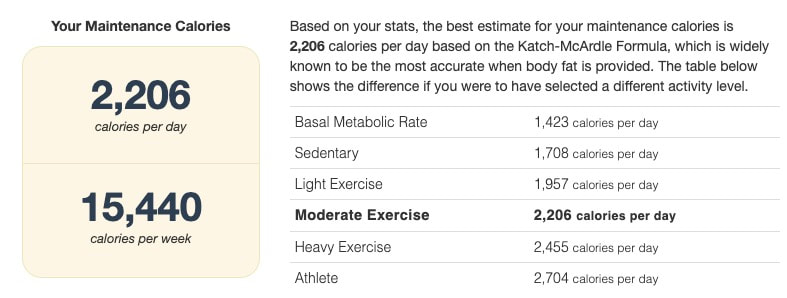|
SEARCH My Blog (Opens in new tab)
Four tips to bring you out of stay-at-home healthier
My stay-at-home exercise level is significantly less than when I was going to the gym three times a week. My weight is starting to creep up.
Here's how much less we need to eat, based upon our reduced level of #StayAtHome activity. I'm still exercising, but a lot less intensively than before stay-at-home. I was doing three intense gym visits and running 5km twice a week. Now I run more often, but don't have the gear and space to put in the maximum intensity I was doing at the gym. You now need 20% fewer calories
Let's get straight into it - what is the difference in calories burned each day if you move from being very active, to doing little physical activity at home?
If (1) you were going to the gym say four times a week, or you had a physically demanding job, and (2) now you are at home doing little exercise, then you need fewer calories. The difference between the two is 750 calories per day for a woman and 1000 calories per day for a man. If you were going to the gym three times a week and you are now doing little physical activity at home then women need 500 calories per day less, and men 600 calories per day less. Those are BIG differences in energy intake. Let's call it an average of 20% less which you need day-to-day. 3 month stay-at-home equals 6.5kg extra weight
Think about what happens if you do not reduce your energy intake. I've noticed my weight creep up a kilogram or two.
The 20% of the energy that you are now consuming that is not being used for exercise will translate into about 0.5kg of extra weight per week. That's "weight" as in fat. It goes straight to fat stores as it has nowhere else to go. If we are shut down for 3 months with coronavirus that is 13 weeks - 13 * 0.5kg equals 6.5kg. That's an unhealthy addition to our weight. Optimistically, you might think to yourself that you can get it off when we get through this period. The usual formula is by reducing your energy intake by 500 calories a day you can lose 0.5kg per week. It's not that easy. You have no doubt noticed that it is easier to put weight on than take it off. There is a widely used rule of thumb that if you "reduce your energy intake by 500 calories a day you will lose a pound a week". That's not true because it does not take into account the metabolic response of the body. Our body will hang on to what it has stored. On the other hand, consuming an extra 500 calories will easily add the weight - because the body is efficient at building its energy reserves. This means that you do not want to be eating more than you need now. How do you know how much to reduce? To know how much to reduce you need to compare your activity levels before stay-at-home and now. Here are the levels:
You then need to know your daily energy consumption before the stay-at-home regime came into place. There are many such calculators, this one is very useful. I am using these two examples:
To get a precise number, you use the Indices associated with your past level of activity and your new level of activity. For example, if you were very active (Index 144) and are now lightly active (Index 115) you are using ((144 - 115)/144) = 20% less energy. For our 65kg woman example, that means 20% X 2206 calories = 440 calories per day. OR, use this rule-of-thumb, which is accurate enough for our purposes. Multiply your weight in kg by:
This gives you your energy requirement for each level of activity. For the example of the 65g woman, the difference between very active (65 * 37) and lightly active (65*29) is 520 calories. I am using 500 calories as an approximation to what most people will need to reduce. What will you cut down? My suggestions are for those over 50. The way you go about this is not to set it up as a diet. You want a sustainable new everyday food plan. You don't want to start counting calories or radically changing your diet, and then tire of it. This change should be:
Remember, the target is to reduce the daily intake by 500 calories. So what do 500 calories look like? Here is a list of common food items which are about 500 calories. They represent the calorie load that we want to cut out of our daily intake. Tip # 1: Reduce your portion sizes The most sustainable and perhaps the simplest thing to do is to reduce your portion sizes by 20% (the 500 calories represented about 20% of calories we consumed before stay-at-home). Even better, maintain the protein portions reduce the low-value foods, the saturated fat, and the carbs by more than 20%. Don't cut your vegetables nor the variety of vegetables.
Tip # 2 Maintain or increase protein
I suggest that you do not cut down on your protein intake. About 30% of the energy in protein is used in metabolising it (this is called diet-induced energy expenditure). This takes time as the protein moves through the digestive system, and it keeps you from feeling hungry. In fact, if you can, you should probably increase your protein as you are probably not eating enough protein. Try to eat about 1.2g of protein per kg of body weight daily, e.g. if you weigh 70kg aim for 140g of protein. One reason for this is because as we age, we metabolise protein less efficiently. If you do increase your protein intake, then you need to reduce calories from your other macronutrients - carbs and fats. Fats ain't fats - there are good and bad
Tip # 3 Increase good fats
It sounds counterintuitive, but increasing healthy fats is a sound strategy. Fats is as essential to our diet as protein and carbohydrates, and healthy fats lead to better health. For example, some vitamins require fat to dissolve into the bloodstream and provide nutrients. Reduce as much as possible your trans-fats. Trans-fats are in foods that contain partially hydrogenated vegetable oils. These are the worst fats for you. You might find trans fat in:
Limit your saturated fat sources such as:
Add monounsaturated fats. This type of helpful fat is present in a variety of foods and oils. Research has consistently shown that eating foods that contain monounsaturated fat can improve your blood cholesterol level and decrease your risk of cardiovascular disease. These foods include:
And add more polyunsaturated fats which contain Omega-3. Omega-3s appear to not only decrease the risk of coronary artery disease but also help lower blood pressure levels and guard against irregular heartbeats. The following types of fatty fish contain omega-3 fatty acids:
By substituting lean cuts of meat for fatty ones, avoiding high-fat packaged foods and snacks, and refraining from fat-rich products such as butter and partially hydrogenated fats, you can cut out dozens or even hundreds of calories per day. On the other hand, many people mistakenly think that cutting fat always means cutting calories. Some fat-free foods contain more calories than the regular versions because manufacturers use extra sugar to make up for the flavour lost in removing the fat. Moreover, low-fat or nonfat foods are not low-calorie if you consume them in large quantities.
Remember this - calories are not bad. The wrong food is bad - and especially that with nutritionally harmful calories. Healthy fats are healthy, but don't overdo it as eating too many calories is not healthy.
Tip #4 Stop eating "empty calorie" carbs
Make a solid effort to take these empty calorie foods out of your regular eating:
Cutting down on these types of food is hard, so try these three hacks:
Summary
Get this right, and make it part of your everyday living, and you can look forward to maintaining a healthy weight for the duration. Now, I'm off to have a few nuts. Good luck.
Follow me on Quora for more health and fitness tips.
If you enjoyed this article >> Follow me Leave a comment >> Share it >> Stay healthy If you have any questions email me and I will get back to you.  RSS Feed RSS Feed
Latest: get your free customised fitness plan designed uniquely for you.
|
ChoicesSince I was diagnosed at 50 with Type 2 diabetes I've been learning how to do bone-building fitness training which lowers my age. You can too. It's your choice. Walter Categories
All
Archives
May 2023
|






